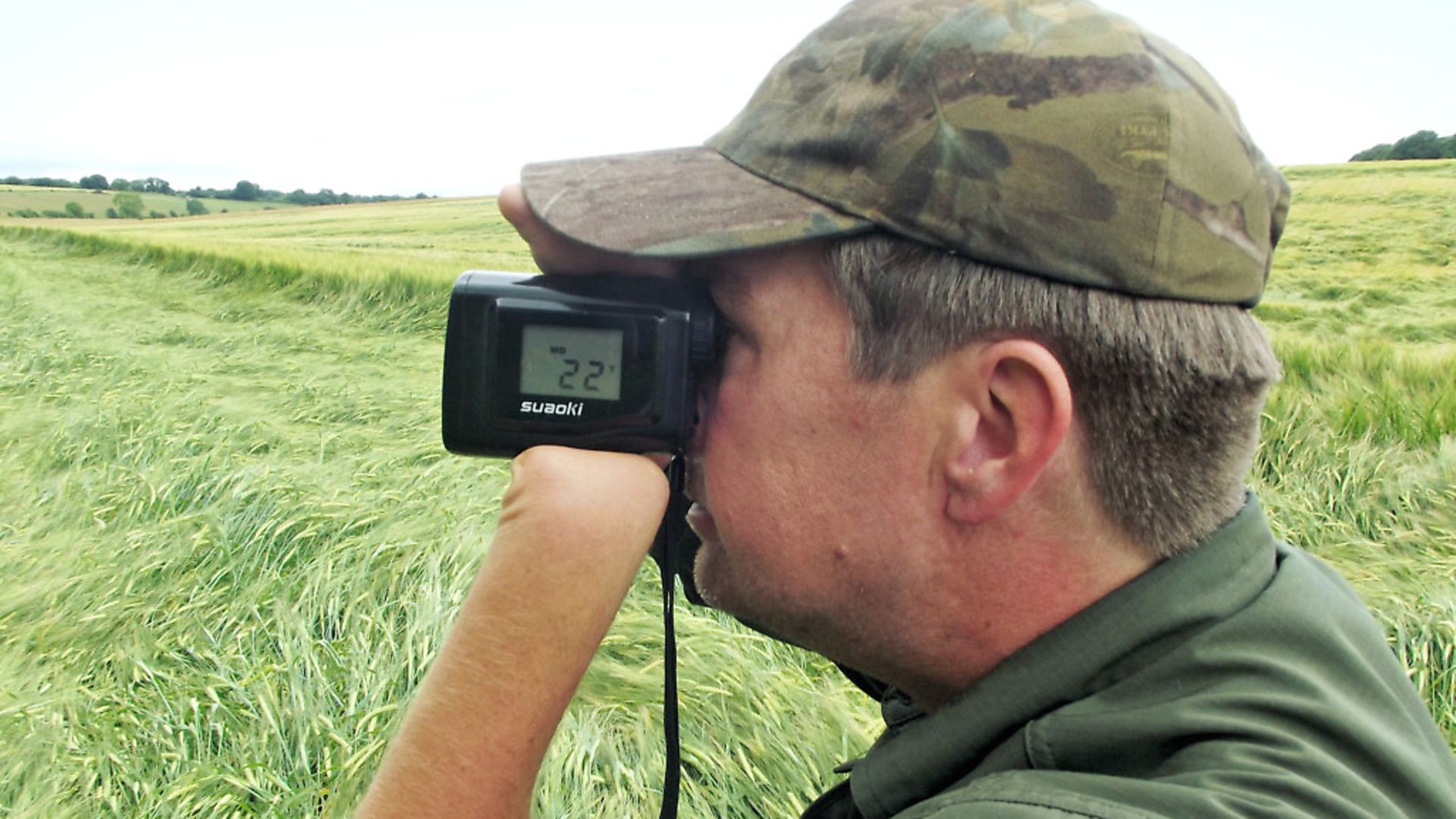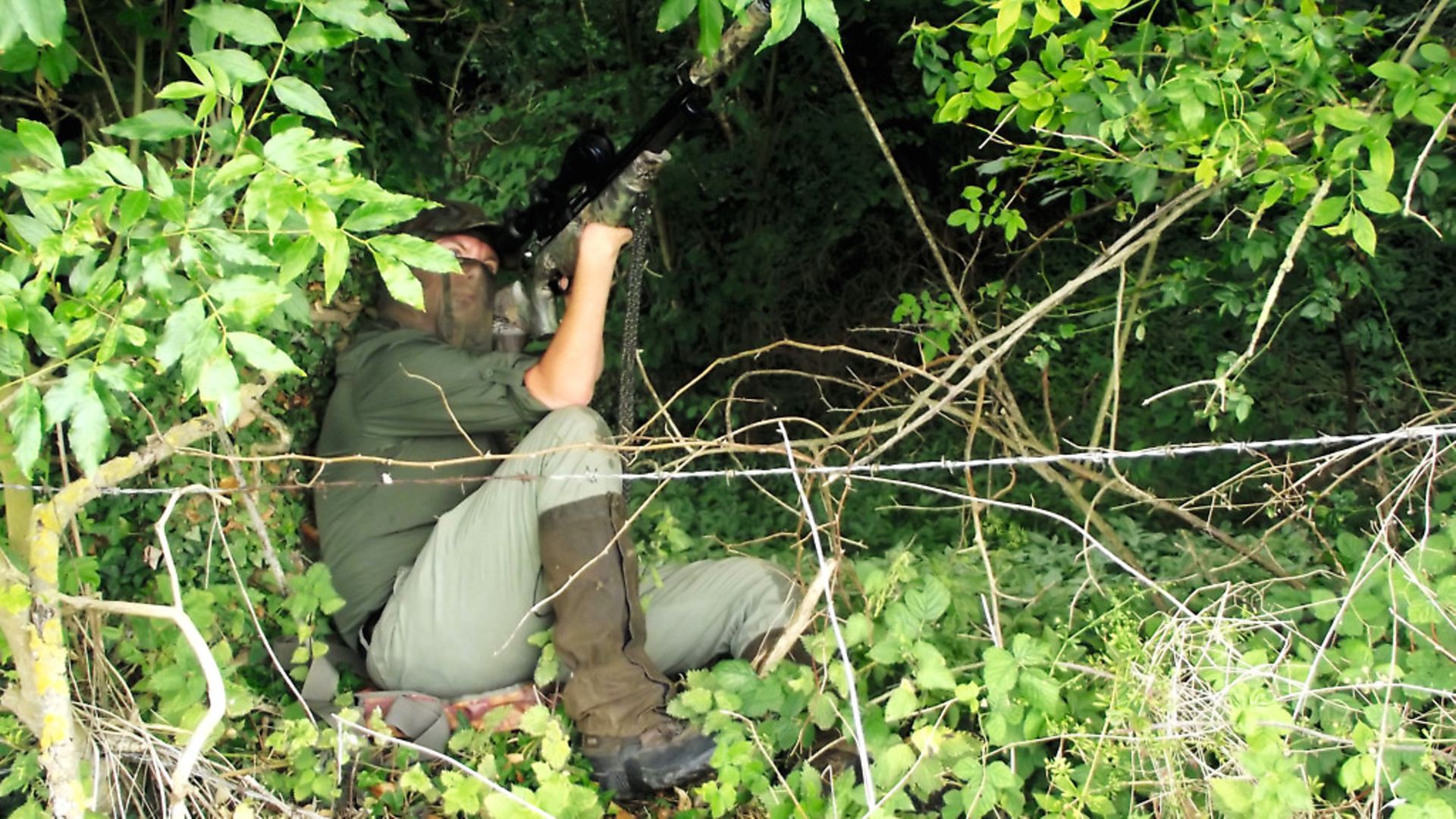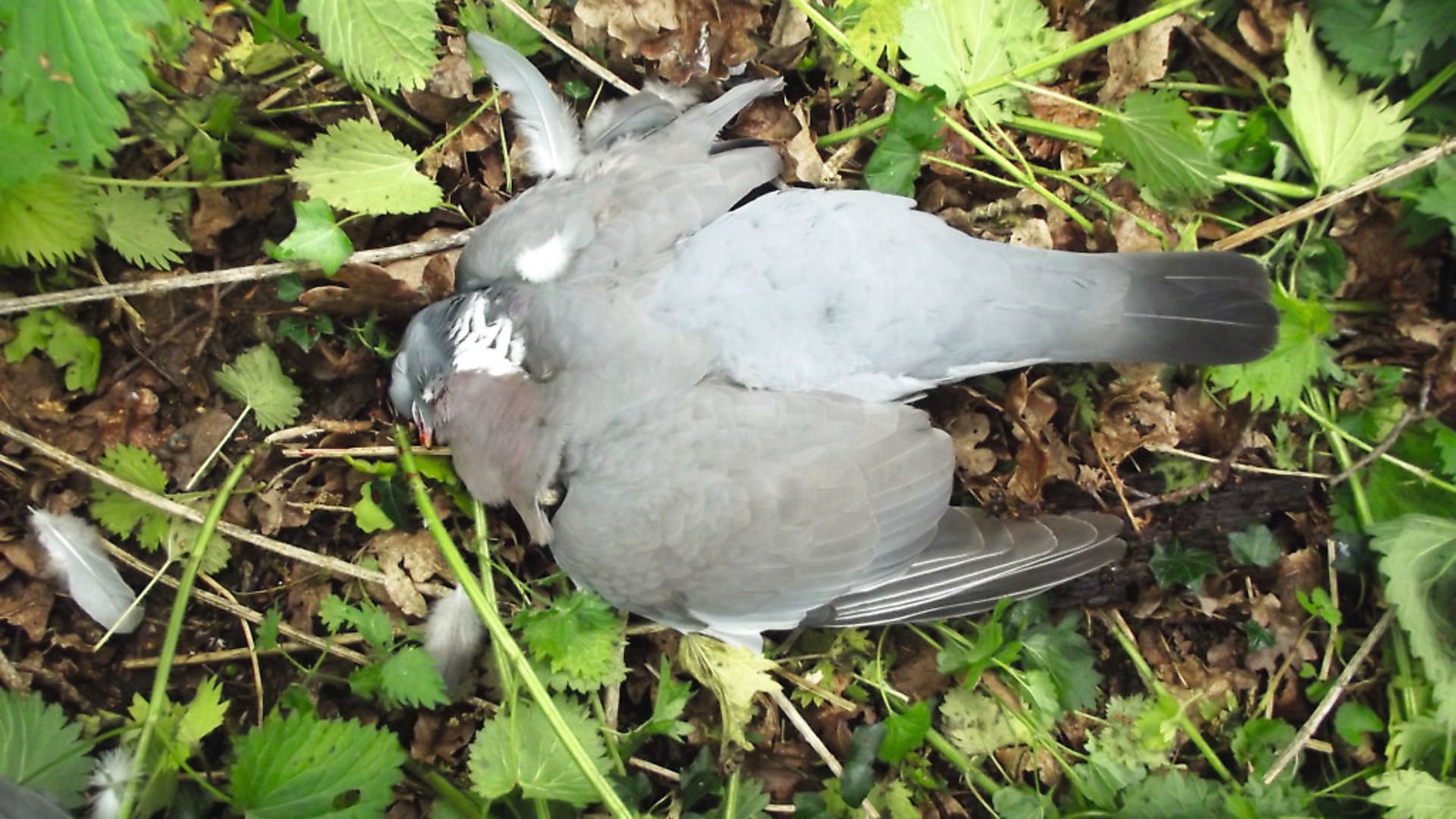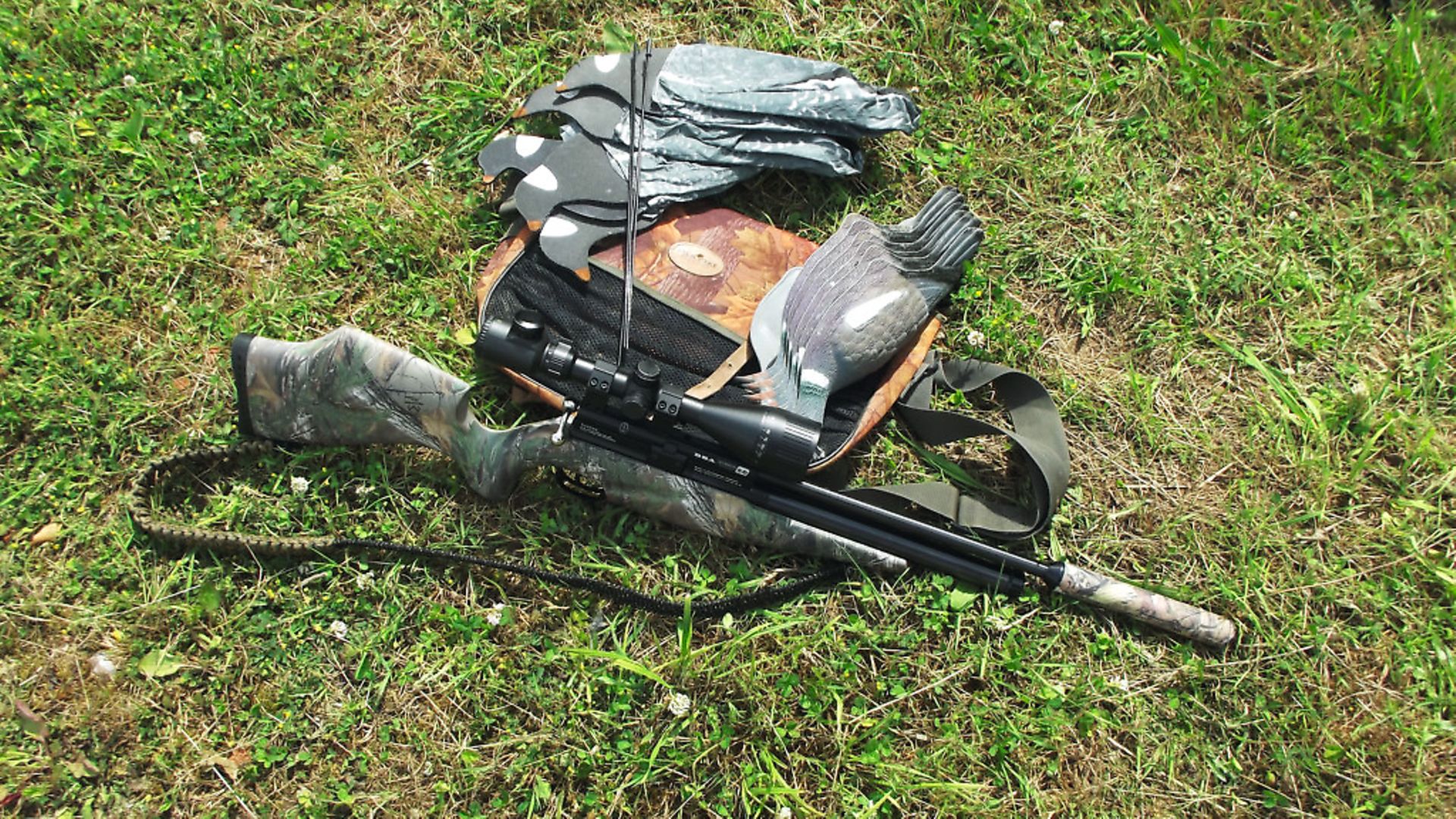Jamie Chandler is watching as nature makes changes to the crops
 credit: Archant
credit: Archant
Those of you who blessed my article with a cursory glance last month may remember that my wife’s family farm was going to be put on the market, and so continuing to hunt over my main ground had been put in some jeopardy. Well, things have sped along; expectations were to sell within six months, but that time frame was exaggerated by a country mile. Two days before the advert appeared in ‘Country Life’ and ‘Farmers Weekly’, an offer was made that beat expectations, which was fantastic news for my in-laws, and today, 14 days after the formal offer, contracts are due to be exchanged.
To put that into perspective; it takes six to eight weeks for your average house buyers to exchange contracts, all being well, so to exchange on a 1000-acre estate, complete with two properties and everything else, in two weeks is an amazing feat. This offer scuppered my own plan to buy the farm because it’s Friday today, and my plan was based on a counter-bid using the funds from my win on the lottery either tonight or tomorrow. So assured was I in my almost certain 45 million to one win, that I was considering a serious Wall Street-like investment in my scheme, but now it looks like that £30 can be used for other priorities, like a couple of new tins of pellets.
 credit: Archant
credit: Archant
We fear change
Although still feeling a little unsure about where my next main permission will come from, I’m trying to embrace the change. As I mentioned last month, both we and our quarry are designed to follow routine, in the main, and not look for change, apart from through necessity. That said, when it comes to hunting and being successful, identifying changes in your surroundings and then exploiting them can be key. Whatever happens with the farm in the longer term, I will still have access to it over harvest and until the end of September, so every day is a blessing, an opportunity, and a chance to fill the freezer.
As I write, it’s the June 30 and my focus has moved from the almost impossible task of rabbit stalking in waist-high grassland, to bagging pigeons on the headlands of almost ripened standing crops, such as wheat, barley and oilseed rape. Although the pigeons, or ‘sky steak’ as my wife and I call them, might not have formed flocks the size of those seen over harvest and midwinter, as airgunners we can exploit this by watching which fields and areas the tasty kebab chunks are committing to, and focusing our energies there to bag them in ones and twos.
As with all the other fields, I’ve been watching a 120-acre field of barley for signs of growing pigeon interest, but for the last month, where so many others have been exploiting fallen patches, there has been barely a stalk fallen. In fact, it had been the best, strongest barley crop I had seen in many years; well that was until the deluge over Tuesday and Wednesday this week. It was as though the weather gods had dropped a huge glass of water straight on to the field; acres of barley were flattened overnight and whilst common most years, the single night of torrential rain had caused a normally gradual event to appear almost instantly. By Wednesday evening, the pigeons had started to find their favoured laid patches and by this morning I was ready to exploit the opportunity, having confirmed yesterday morning and afternoon, the sky steak’s commitment to snacking there.
 credit: Archant
credit: Archant
Sillosocks
I recently bought some Sillosocks pigeon decoys from UK Shoot Warehouse, that I was keen to try out after using them at a friend’s farm, decoying over rape during the winter with a shotgun. Although looking more like a grey windsock than a traditional decoy, six of these muddled in with six shell decoys are not only really easy to pack because they weigh barely anything and flatten down to nothing in your rucksack or game bag, but also with a bit of wind, they really work. They add incredible movement to your decoy pattern, and pigeons land happily near them and start feeding, so even they don’t notice the difference close up.
Armed with six of these new decoys, six traditional half shells, and my BSA Scorpion SE in .22, I arrived at the flattened barley field at 5.45am today. I was greeted with the joyous round of applause from 15-20 pairs of wings clapping skywards, attached to plump, barley-fed bodies, from one particular patch. Things were looking so positive that I could almost smell the chilli marinade wafting up with them.
I was satisfied that I’d picked the right spot and so quickly got to business, laying out a pattern of decoys similar to how the real pigeons seemed to have been spaced before I’d startled them. The maximum distance I was shooting out to was only my zero at 27 yards, due to the width of the fallen barley patch, which was perfect, and the gentle breeze was an added boon because it gave life to the Sillsocks decoys that filled and moved with a genuine likeness to the real thing. With decoys set, I holed up in the hedge line, using the barley towards my edge of the patch as added cover, and began the hunter’s vigil of watching and waiting.
 credit: Archant
credit: Archant
Here they come
My first opportunity dropped in confidently after only a 10 minute wait. It landed towards the far side of the laid patch, fluttering up and around to find a sure footing before landing. I shouldered the Scorpion and searched through the scope for the shot, but frustratingly, the pigeon was sitting below my line of sight, protected by the standing barley that was helping to shelter me from its watchful eyes.
After what seemed an eternity, I rested the rifle because the pigeon was clearly happy feeding along the edge nearest to me and out of my sight, and I got the odd glimpse of grey through the stalks, but nothing to identify a kill-zone shot. Once again, it seemed that an eternity passed, with me remaining stock still to avoid being seen, and then finally, another dropped down in the middle of the patch.
I raised the Scorpion slowly and found it dead centre in my scope. I pulled the trigger, but way too fast; the shot went high, the pigeon and its fat friend tore skywards, and I watched as they vanished. Possibly one of them, or maybe another pigeon arrived seconds later – not in the pattern, but in the branches above me, facing away. I had a clear shot and was careful to check my breathing this time. I took the shot and the pigeon folded to the floor without a twitch as the pellet hit the boiler room, as intended.
I resumed my wait, but nothing happened for the next three hours. At 10am, I called it a day, but as I rose from my hide I noticed that some 30 yards away a rabbit was sitting on the field margin. I pushed forward quietly, found the rabbit broadside in the scope, slipped the trigger and watched as the AA Field smashed home. At least, I’d bagged two of something in my four-hour vigil.
After packing up, I drove round the estate because I couldn’t understand why it had been so quiet and I put up a flock of about 100 pigeons from the side of a wheatfield, half a mile from the barley field! It just shows you that everything can change overnight, and we have to adapt to whatever it is, or simply lose out.
Read more from Jamie Chandler...
Hunting journal: horses, bunnies and a Scorpion